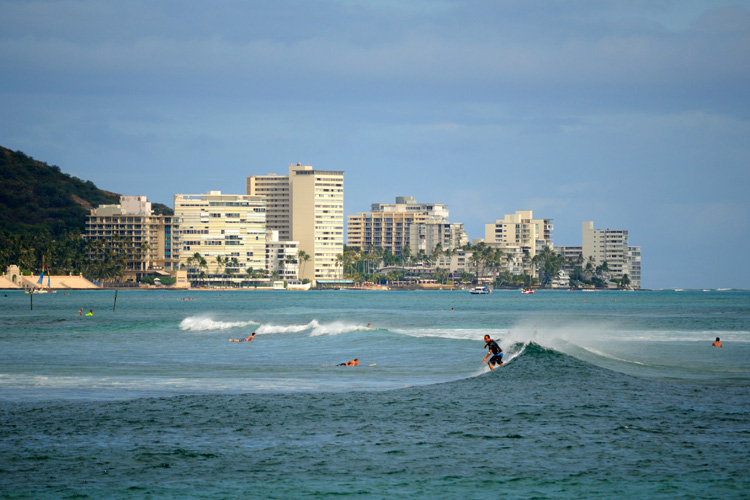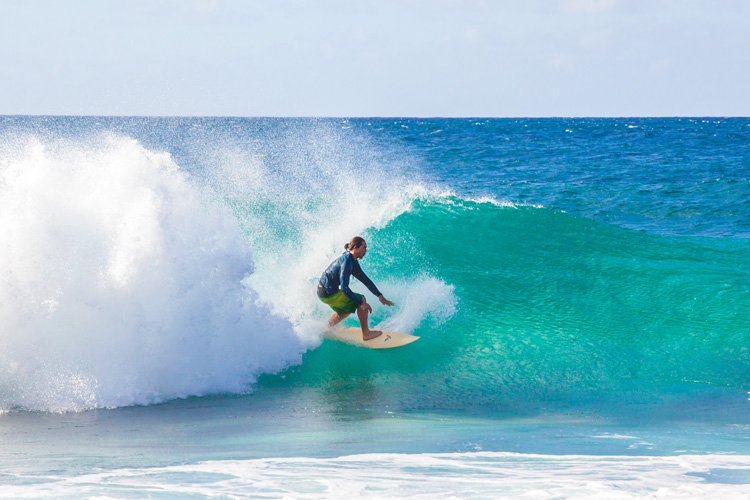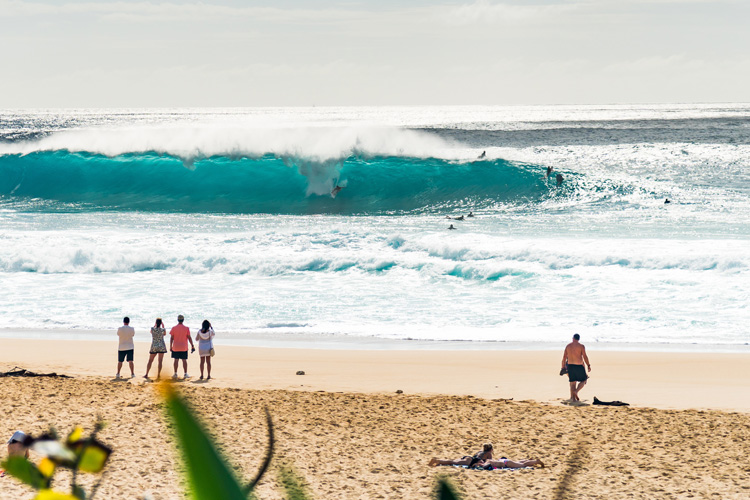Hawaii is one of the most popular surfing destinations on the planet. But when should a European, Australian, or mainland American surfer visit the Aloha State?
When the American novelist-journalist Jack London and his wife Charmian visited the Pacific archipelago in 1907, they got in touch with the strange "surfboarding" pastime.
Since then, tourism has completely revamped Hawaii, and the number of foreigners interested in getting in touch with the spirit of aloha never stopped growing.
In 1929, around 22,000 tourists visited Hawaii, but by 1941, the number increased by 50 percent to 31,846 visitors.
When World War II ended, tourism skyrocketed, and in 1959, the number of travelers reaching Hawaii hit the 250,000 mark.
Today, the Hawaiian islands welcome nearly nine million visitors every year, and many of them are chasing a unique dream - to surf the waves of their lives in turquoise-blue warm waters.
It's no wonder Hawaii is a popular surf destination.
The isolated islands are exposed to a 360-degree swell window, strong currents, and winds of all sorts, so you'll hardly miss a good opportunity to score big time.
There are only two seasons in Hawaii - summer ("kau") from May to October and winter ("ho'oilo") from November to April - and the average air and water temperatures are nearly constant and stable throughout the year.

Hawaii Has Waves For Everyone
The spiritual home of surfing has waves for all experience levels, a wide variety of ocean bottoms - lava, coral, rock, sand - and rounded shorelines that will protect a beginner surfer from thunderous conditions.
Roughly, it's fair to say that of the eight main islands of Hawaii, only two to four are suitable for surfing all year round - Oahu, Maui, Kauai, and Big Island.
So, from a safety perspective, there are always small and gentle rollers available for a first-timer to the sport or for someone with little experience in surfing.
For example, Honolulu's Waikiki Beach is always a consistent option, even during ultra-crowded days.
If you're an advanced and skilled surfer, the best time to surf Hawaii is, without any doubt, the winter season, i.e., somewhere around mid-November and early February. During this period, waves are bigger and more powerful.
It's the time of the year when big wave surfing competitions hit the North Shore of Oahu, and the adrenaline junkies and life-defying acts ignite the beach and show Hawaii to the world.
The often called "Seven Mile Miracle" is a stretch of coastline on the North Shore featuring around 36 world-class surf breaks, including Haleiwa Beach Park, Sunset Beach, Off The Wall, Backdoor, Banzai Pipeline, Waimea Bay, and Gas Chambers.
It's widely considered surfing's Mecca, and the region welcomes hundreds of thousands of surf tourists every year who seek the dream waves they saw in magazines, online videos, and surf movies.

Surfing's ultimate proving ground pumps two-to-50-foot waves all year round, but if you're not an intermediate rider, this is not the place to be.
During wintertime, beginners should try the south shores of the Hawaiian islands to avoid the northern hemisphere swells that traditionally sweep the northern coastline.
When summer arrives at the most isolated landmass on planet Earth, you get the opposite scenario - smaller surf in the north and larger waves in the south.
So, from an average surfer's perspective, it is safe to say that Hawaii will always deliver what you're looking for.
Nevertheless, you should try to approach the waves with a conservative mindset; otherwise, you'll put yourself in dangerous situations.
Observe the breaking of the waves, spot potential rip currents, scan the seafloor topography, read the weather charts, and calculate the effects of tides in your surf session.
Remember to respect the locals, embrace the aloha spirit, and enjoy surfing on the Hawaiian islands.
Surfing in Hawaii | The Seasons
Winter (November to April)
Prevailing Swell: N/W
Prevailing Winds: SW/SSW
Air Temperature: 79-83 °F (26–28 °C)
Water Temperature: 72-80 °F (22-26 °C)
Summer (May to October)
Prevailing Swell: South
Prevailing Winds: NE
Air Temperature: 85-90 °F (29–32 °C)
Water Temperature: 72-82 °F (22-27 °C)
